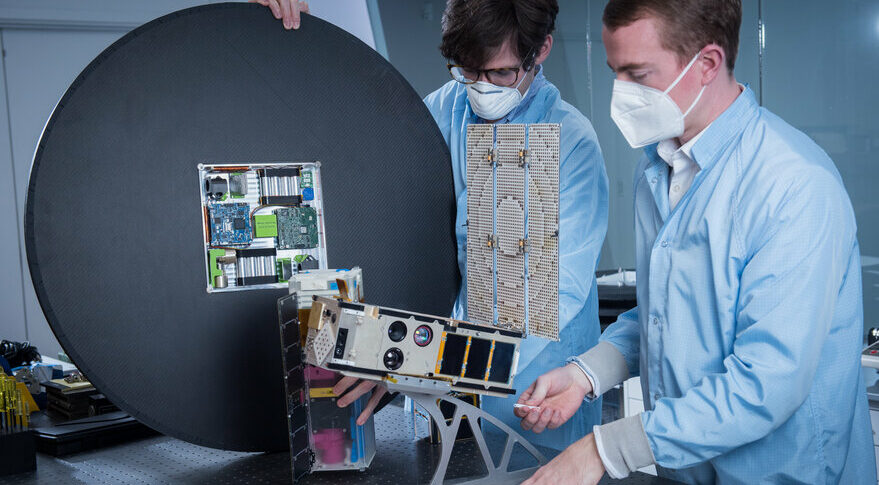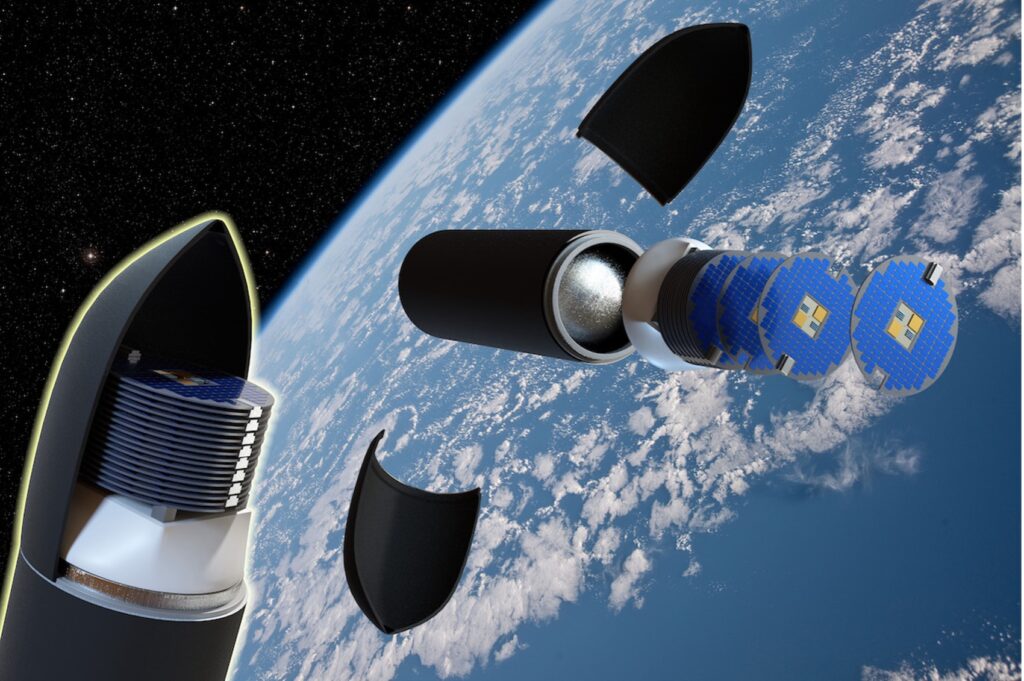NASA has allowed the testing of DiskSat satellites in orbit, which have the shape of a flat disk. This form will allow them to be more economical and will facilitate the location in orbit.

Satellites in the form of disks
Aerospace Corp. has agreed with NASA its DiskSat satellites in 2024. Each of these devices is a disk with a diameter of 1 m and a thickness of only 2.5 cm. They are put together in a block that allows them to separate at a certain point in time.
The unusual shape of the satellites should ensure their high efficiency. Traditionally, cubic-shaped structures are used for low-mass devices. However, such satellites usually have problems with the placement of solar panels to provide them with power.
But DiskSat will not have such problems. Even if one of the surfaces of these satellites is simply covered with solar panels, this will be enough to get from 60 to 80 watts for the operation of on-board electronics. If they are equipped with remote panels, this will allow them to get from 100 to 160 watts.
Low orbit test
At the same time, most of the energy will be used to ensure the movement of the device. Apparently, they will be equipped with some type of ion engine. After all, it is planned to use them mainly in low orbit, where all the time it is necessary to struggle with the resistance of the molecules of the earth’s atmosphere.
The test program provides that one pair of DiskSat will be located in an orbit 250 km high. They will maneuver on it for a week, after which they will rise and continue to function in a more rarefied environment.

The second pair of DiskSat will be launched into an eccentric orbit with a perigee of 200 kilometers. It will allow them to regularly approach the surface of the Earth, but spend most of the time away from it and compensate for the loss of speed with the help of engines.
One of the advantages that satellites have in the form of disks is also called the compactness of the devices. Aerospace Corp. engineers plan to assemble packages of 20 such vehicles and put them into orbit together, “shooting” each one exactly on the required trajectory.
According to spacenews.com
Follow us on Twitter to get the most interesting space news in time
https://twitter.com/ust_magazine

